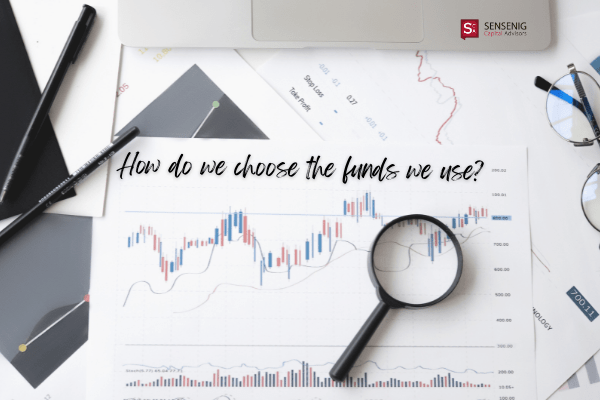Weston Wellington – Vice President, Dimensional Fund Advisors
Equity investors around the world had a disappointing year in 2011 as thirty-seven out of forty-five markets tracked by MSCI posted negative returns. The US did well on a relative basis and was the only major market to achieve a positive total return, although the margin of victory was slim. Total return for the S&P 500 Index was 2.11%, and the positive result was a function of reinvested dividends—the index itself finished the year slightly below where it started.
Throughout the year, investors seeking clues regarding the strength of business conditions or the prospects for stock prices were confronted with ample reason to rejoice or despair. Optimists could cite the strong recovery in corporate profits and dividends, the substantial levels of cash on corporate balance sheets, low interest rates and inflation, a booming domestic energy sector, continuing strength in auto sales, and record-high share prices for leading multinationals such as Apple, IBM, and McDonald’s. Pessimists could point to persistently high unemployment, slumping home prices, tepid growth in retail sales, worrisome levels of government debt at home and abroad, and political gridlock in both Congress and various state legislatures.
Although the broad market indices showed little change for the year, there were opportunities to make a bundle—or lose one. Among the thirty constituents of the Dow Jones Industrial Average, thirteen had double-digit total returns, including McDonald’s (34.0%), Pfizer (28.6%), and IBM (27.3%). But losing money was just as easy: The three worst performers in the Dow were Hewlett-Packard (–37.8%), Alcoa (–43.0%), and Bank of America (–58.0%). If nothing else, the substantial spread between these winners and losers discredits the argument we often hear that all stocks are now marching in lockstep and that diversification is ineffective.
Achieving even modest results in the US market required more discipline than many investors could muster, since investor sentiment fluctuated dramatically throughout the year and the temptation to enhance returns through judicious market timing often proved irresistible.
For fans of the “January Indicator,” the year got off to a promising start as stock prices jumped higher on the first trading day, pushing the Dow Jones Industrial Average to a twenty-eight-month high. Bank of America shares jumped 6.4% that day, the top performer among Dow constituents. With copper prices setting new records and factory activity worldwide perking up, the biggest worry for some was the potential for rising prices and higher interest rates that might choke off the recovery. “Overheating is the biggest worry,” one chief investment strategist observed. By April 30, the S&P 500 was up 8.4%, reaching a new high for the year.
Stocks wobbled through May and June but strengthened again in July. On July 19, the Dow Jones Industrial Average had its sharpest one-day increase of the year, jumping over 200 points, paced by strong performance in technology stocks. Just a few days later, however, stocks began a precipitous decline that took the S&P 500 down nearly 17% in just eleven trading sessions. The century-old Dow Theory—a sentimental favorite among market timers—flashed a “sell” signal on August 3, and on August 5, Standard & Poor’s downgraded US government debt from AAA to AA+. As investors sought to assess the implications of sovereign debt problems in both the US and Europe, stock prices fluctuated dramatically, with the S&P 500 rising or falling over 4% on five out of six consecutive trading days in early August. Rattled by the sharp day-to-day price swings, many investors sought the relative safety of US Treasury obligations in spite of the rating downgrade, pushing the yield on ten-year Treasury notes to a record low. Stock prices hit bottom for the year on October 3 as some market participants apparently lost all confidence in equity investing. A Wall Street Journal article cited a number of individual investors as well as professional advisors who had recently sold all their stocks and did not expect to repurchase them anytime soon. “I feel like a deer in the headlights,” said one.
As it turned out, the article appeared in print on the second day of a powerful rally that sent the Dow Industrial Average surging over 1,500 points during the next 19 trading days, putting it back into positive territory for the year.
What can we learn from a difficult year like 2011? As Dimensional founder David Booth is fond of saying, the most important thing about an investment philosophy is that you have one. Many investors (as well as some professional advisors) apparently decided to switch from a buy-and-hold philosophy to a market timing strategy in the midst of an unusually stressful period in the financial markets. We suspect few of those adopting the change would have been able to clearly articulate their investing beliefs and why they had shifted.
Legendary investor Benjamin Graham offered the following observation nearly forty years ago: “There is no basis either in logic or in experience for assuming that any typical or average investor can anticipate market movements more successfully than the general public, of which he himself is a part.”
Good advice then, good advice now.
References
Mark Gongloff, “Investors’ Forecast: Sunny With a Chance of Overheating,” Wall Street Journal, January 3, 2011.Jonathan Cheng and Sara Murray, “Stock Surge Rings in Year,” Wall Street Journal, January 4, 2011.
Matt Phillips and E.S. Browning, “Tech Sends Stocks Soaring,” Wall Street Journal, July 20, 2011.
Steven Russsolillo, “‘Dow Theory’ Confirms It’s an Official Swoon,” Wall Street Journal, August 4, 2011.
Damian Paletta, “U.S. Loses Triple-A Credit Rating,” Wall Street Journal, August 6, 2011.
Tom Petruno, “Investors Stampede to Safety,” Los Angeles Times, August 19, 2011.
Kelly Greene and Joe Light, “Tired of Ups and Downs, Investors Say ‘Let Me Out’,” Wall Street Journal, October 5, 2011.
Benjamin Graham, The Intelligent Investor (New York: HarperCollins 1949).
The S&P data are provided by Standard & Poor’s Index Services Group.
MSCI data copyright MSCI 2011, all rights reserved.
Yahoo! Finance, www.yahoo.com, accessed January 3, 2012.



